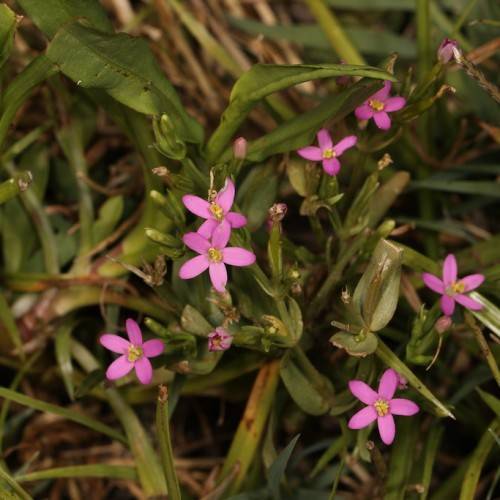
Branching Centaury
Centaurium pulchellum
Watering:
Frequent
Hardiness Zone:
Sun:
full sun
Leaf:
Yes
Growth Rate:
Low
Drought Tolerant:
Yes
Salt Tolerant:
Yes
Invasive:
Yes
Care Level:
Medium
watering
The Spotted - Diffuse Hybrid Knapweed requires weekly watering for best growth and health. During the growing season, it should be watered deeply once a week throughout the summer months, or when the soil appears to be dry. During winter, waterings should be decreased; the plant should only be watered if the soil is completely dry. The Spotted - Diffuse Hybrid Knapweed should never be left in standing water. Too much water can lead to root rot.
sunlight
Spotted - Diffuse Hybrid Knapweed (Centaurea x psammogena) requires a minimum of 6 hours of direct sunlight per day in order to thrive. A location that receives full morning sun and partial afternoon shade is ideal. The plant can tolerate full sun, though this can lead to drying out and wilting of the leaves. In the cooler months (fall and winter), it may be beneficial to give the plant additional hours of sunlight to ensure it receives its required sunlight needs.
pruning
The timing of pruning Spotted-Diffuse Hybrid Knapweeds should vary depending on the specific climate and location. Generally speaking, the best time to prune hybrid knapweeds is in late winter or early spring, right after the last frost of the season and before new growth begins. This is when the plant begins to grow rapidly and starts to flower. Pruning can also be done throughout the season, as needed for maintenance or aesthetic pruning. When pruning, it is best to remove no more than 1-third of the total plant material in 1 season. This approach will ensure that the plant is not over-pruned, which can cause severe damage. It is also important to maintain a neat, well-groomed look to the plant. Avoid pruning right before a cold snap to ensure the pruning doesn’t cause further damage to the plant before the temperature returns to normal.
